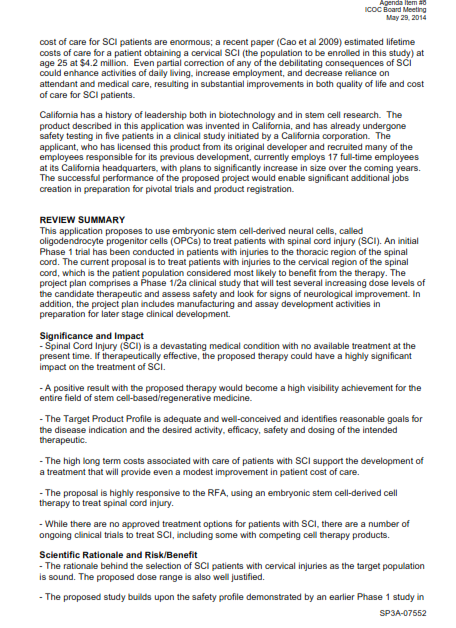He has raised more than
$1 billion for life sciences financing via his investment banking firm. He
publishes an annual state-of-the-industry study that is something of a bible.
He is an
omnipresent speaker at major biotech conferences. In 2006, his
firm organized a stem cell conference that was
partly a celebration of the California stem cell agency. Next week he is scheduled
to be a keynote speaker at the huge BIO2014 industry
conference in San Diego, which is expected to be attended by 16,000 persons.
Today, however, the Web site for his investment firm is shut down. The headlines about him on the Internet are less than pleasant. To use an expression that Burrill sometimes utters, he is in “deep yogurt.”Nathan Vardi broke the story yesterday on Forbes. The piece was headlined
Other stories used terms like “disbelief,” “fraud allegations,” “ousted” and "dumped.""Steven Burrill Removed From Control Of Venture Fund For Unauthorized Payments”
Vardi’s
snynopsis of the allegations said,
"G. Steven Burrill, the CEO and founder of Burrill & Co., a San Francisco financial firm specializing in biotechnology and life sciences investing, was ousted from control of a $283 million venture capital fund earlier this year by big institutional investors that cited willful or reckless misconduct related to unauthorized payments, according to documents recently filed in California State court in San Francisco."
Alex Nash at Xconomy wrote,
“Burrill, known for his natty suits and pink shirts, is being sued for fraud by a former colleague for allegedly taking cash meant for investment and diverting it to his own 'designees and affiliates.'”
Burrill has not yet
responded to requests for comments from the media covering the situation. And
it is not clear whether he will still appear for his scheduled 90-minute talk
next Tuesday in San Diego.
All of this involves
allegations and contentions in lawsuits. But the perception is not good.
Burrill himself knows the importance of perceptions. A few years back he spoke to a group at Stanford about making money in biotech and said,
“Perceived value is more important than real value.”
(See embedded video at the top of this article.)
And in February in comments to the Tampa Bay
Business Journal about California’s success in life
sciences, he said,
“Culture is a big part of it. People want to be part of a culture that tolerates failure.”






